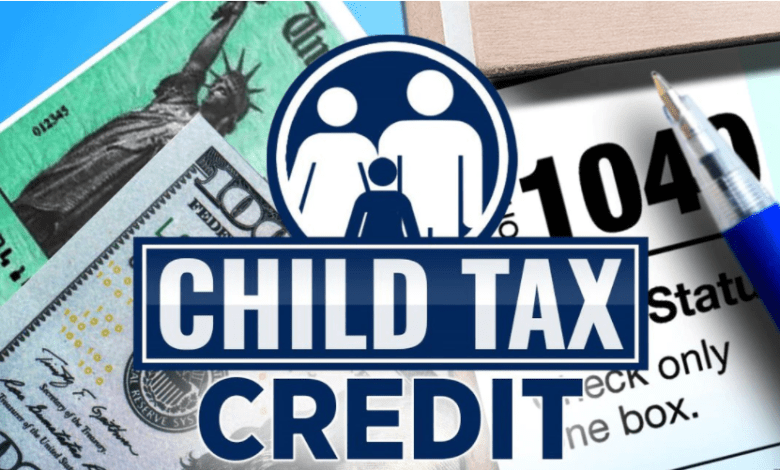Child Tax Credit: How It Works Under the New Stimulus Bill – Key Information
Child Tax Credit 2021: Who Gets $3,600, is it Refundable and How Do I Apply?

The Child Tax Credit is a benefit granted to US taxpayers for each eligible dependent child who is under the age of 17 at the end of the tax year. Recent tax legislation passed in December 2017 doubled this credit to $2,000 per child and made it largely refundable. Previously, it was a $1,000 non-refundable loan. Remember that a credit reduces the amount that the taxpayer must pay on a dollar-for-dollar basis. The Child Tax Credit is intended to provide extra tax relief to taxpayers with dependent children who, due to their condition, qualify for this benefit.
How the Child Tax Credit works
Tax legislation passed in December 2017 doubled the Child Tax Credit, beginning in fiscal year 2018 through the end of 2025. The new credit of $2,000 per qualifying dependent child makes $1,400 of the Child Tax Credit refundable. This means that even if the father does not have to pay taxes or must pay less than $1,400, she can receive up to a maximum of $1,400 as a tax refund (credit) if both the child and the father qualify for this benefit. Only one taxpayer can claim the Child Tax Credit, even if the eligible child lived in more than one household during the tax year. If one parent has primary custody of the child, that parent usually receives the tax credit. In joint custody cases, the parents must agree on when each will claim the credit, in alternate years or in some other way.
Key Information:
- The Child Tax Credit is a tax credit of $2,000 per eligible child for American taxpayers
- Eligible children are legal dependents under the age of 17, American citizens, nationals or aliens residing in the United States.
- This tax credit is phased out for high-income families as its goal is to help low- and middle-income workers.
Who Qualifies for the Child Tax Credit
The Internal Revenue Service has established several factors that determine eligibility for the Child Tax Credit. To qualify, the child must be a US citizen, US national, or resident alien in the country. He must also have lived with the person applying for the tax credit for more than half of the tax year and be reported as a dependent on the taxpayer’s return. Although most taxpayers are entitled to the Child Tax Credit for their children, other family members under the age of 17 may also qualify if the taxpayer covered more than half of their expenses during the tax year. The previous case includes siblings, grandchildren and nephews, who may be entitled to the credit if they meet the age, citizenship and residency requirements. Adopted and foster children are also entitled to the credit. Because the Child Tax Credit was designed to help low- and middle-income families, it had originally been reduced or eliminated for earners who earned above certain fairly modest income levels. For tax year 2017, married couples filing jointly with adjusted gross income of more than $110,000 were not eligible for the Child Tax Credit. Singles, heads of households, and widowers, with adjusted gross income above $75,000, were also not eligible for the benefit. The new tax law raised these levels to $400,000 for married couples and $200,000 for eligible singles, heads of household and widowers. These higher levels will go live in late 2025.
Eliminated the Additional Tax Credit for Children
The new tax law abolished the Additional Child Credit, which was designed to help families who generated very little taxes, so that they could take full advantage of the tax credits for having children, since the Child Tax Credit in the previous Law was not refundable. The Additional Credit for children was a credit aimed at families that did not generate enough taxes to obtain the full credit that they were entitled to. The family was also required to have earned at least $2,500 to receive the credit. This additional credit disappeared after the passage of the new law and is now refundable up to $1,400 per child under the Child Tax Credit.
CTC Increases Due to Pandemic
The administration of President Joe Biden has arranged a third stimulus plan for 1.9 trillion dollars to alleviate the effects of the pandemic. Measures taken include temporarily increasing the maximum child tax credit and the Earned Income Tax Credit (EITC). This means that the benefit reaches low and middle income families and now the credit will be paid periodically instead of being made in a single payment. Taxpayers who may qualify for this benefit don’t have to do anything at this time except file their 2020 tax return if they haven’t already done so.
Main changes of the Child Tax Credit
- The credit will be fully refundable by 2021. Families will receive the full amount even if they are not required to pay federal income tax, like most low-income families with children.
- Credit amounts are increased from $2,000 to $3,600 for children 5 years and younger.
- The amount of the credit is increased from $2,000 to $3,000 for children ages 6 to 17.
- Families with adult dependents, ages 18-24, can receive $500 each.
- Phasing out the extra $1,000 (and $1,600 for young children) for incomes above 112,500 for single-parent families and $150,000 for couples.
- Families will receive half of their 2021 CTC in monthly installments starting in July. The other half will be collected at the time of paying taxes at the beginning of next year. Families will receive monthly payments of $300 for toddlers and $250 for older children from July through December. And the remaining $1,800 for toddlers and $1,500 for older children will be awarded early next year.
- It allows families in Puerto Rico to claim the extended and fully refundable CTC from the IRS. In addition, it provides funds for other US territories to do the same.
How to Register if You Don’t Normally File a Tax Return
The IRS makes an online tool available for families with qualifying dependents to verify their enrollment or update their bank details to begin receiving benefits. If you earn less than $12,500 a year and you are the head of the family or have a married couple with children, you need to report this to the IRS. Right there, you can update information about the family (if there have been changes in the number of dependents) and you can even choose not to receive monthly payments but a single payment in 2022.
Who Does This Credit Help
The Child Tax Credit is a tax credit available to parents or guardians of dependent children. The Child Tax Credit can help if you have federal income taxes withheld from your salary, pension or other income. You do not need to claim the Child Tax Credit in the same year that you pay for any qualifying expenses. It is separate from the Child and Dependent Care Credit , which only applies if you pay someone else to care for your child so you (and your spouse, if married) can work or look for work. If you have no federal income tax withheld from your wages during the year, you cannot use either credit because they are based on the amount of income tax withheld. The Child Tax Credit can result in a refund . The Child and Dependent Care Credit generally cannot. The Child Tax Credit is a non-refundable tax credit which means that it will reduce the amount of income tax you owe, but if the credit is more than your total taxes owed, only the difference will be refunded to you. It helps offset child care expenses (either yours or those of someone you pay) so you can either work or look for work . If you qualify for certain other tax benefits related to having children, learn about them on www.irs.gov.
Parents with Child Taxes Problems?
When you’re a parent, you know that raising kids isn’t cheap. Childcare costs in the U.S. are among the highest in the world; and that doesn’t even take into account everything else: from baby formula to clothing to educational expenses, it all adds up fast. Tammy’s two girls are getting bigger and growing out of their clothes faster than she can fill their closets with winter coats (they live in New Hampshire). And when Tammy heard about Child Tax Credits on TonsOfCards.com, she knew it was time for her family to apply! While Child Tax Credits exist so families can offset some of their child-rearing expenses, they aren’t available right away: you need to file an application with the Child Tax Credit first. But don’t worry — the Child Tax Credit is available regardless of your family’s situation: you can use Child Tax Credits to claim all the tax deductions and credits that exist, from Dependent Care Benefits to Child & Dependent Care Credit.
Our Final Thoughts
If you’re a parent and are looking for ways to save money, then child tax credits may be the perfect solution. With so many different types of tax credits available for parents, it can be difficult to know which ones will work best in your situation. To help make this decision easier on you, we’ve put together some information about how they work below. Which type of credit do you think would work best with your family’s needs? The IRS recognizes that the number of hours a parent spends on child care is not compensated, so they offer these tax credits as a way to help offset the time and cost your spending parenting. Parents can claim this credit for their children up to age 17 and still be eligible for it in 2021.

